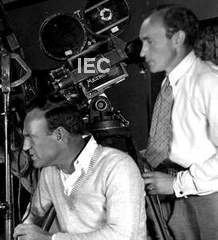Years active 1916-1960 Name John Seitz | Role Cinematographer | |
 | ||
Occupation Cinematographer and Inventor Died February 27, 1979, Woodland Hills, California, United States Spouse Marie Boyle (m. 1934–1979) Children John Lawrence Seitz, Margaret Alice Marhoefer Movies Sunset Boulevard, Double Indemnity, The Lost Weekend, Sullivan's Travels, This Gun for Hire Similar People Charles Brackett, D M Marshman - Jr, Hans Dreier, Rex Ingram, Frank Tuttle | ||
Double indemnity 5 9 movie clip keyes smells a murder 1944 hd
John Francis Seitz, A.S.C. (June 23, 1892 – February 27, 1979) was an American cinematographer and inventor.
Contents
- Double indemnity 5 9 movie clip keyes smells a murder 1944 hd
- John F Seitz Tribute
- Career
- Filmography
- Accolades
- References
He was nominated for seven Academy Awards.
John F. Seitz Tribute
Career
His Hollywood career began in 1909 as a lab assistant with the Essanay Film Manufacturing Company in Chicago. He went to work as a lab technician for the American Film Manufacturing Company (known as "Flying A"), also in Chicago.
In 1916 during the silent era he established himself, achieving great successes with the Rudolph Valentino film, The Four Horsemen of the Apocalypse (1921).
Highly regarded by director Billy Wilder, Seitz worked with him on the film noirs Double Indemnity (1944), The Lost Weekend (1945), and Sunset Boulevard (1950), receiving Academy Award nominations for each.
During his career he received seven nominations for Academy Award for Best Cinematography. In 1929 he served as president of the American Society of Cinematographers (A.S.C.) for a year, and had been a member since 1923. The A.S.C. named the 2002 Heritage Award after Seitz.
Seitz retired in 1960 and devoted himself to photographic inventions for which he held 18 patents. An example of a Seitz invention is the matte shot: a large painting is photographed separately and later added to a scene to expand it, add effects, and/or create a sense of depth in backgrounds. He was also noted for his innovations with low-key lighting, which enhanced the film noir style. A widower, he married screenwriter Marie Boyle in 1934 who raised his daughter Margaret Alice Marhoefer and later gave birth to a son, John Lawrence Seitz.
Burial: Holy Cross Cemetery.
Filmography
Source:
Accolades
Nominations
